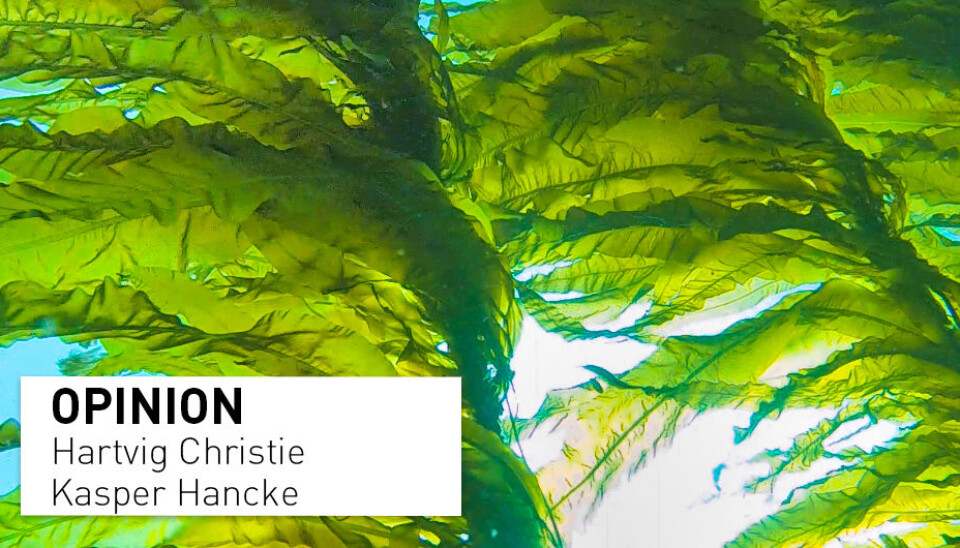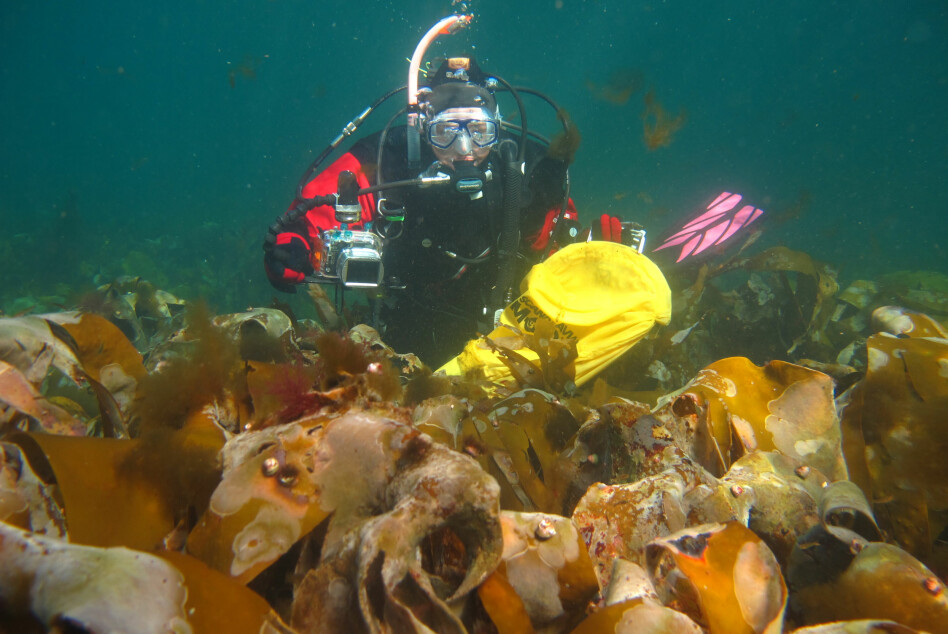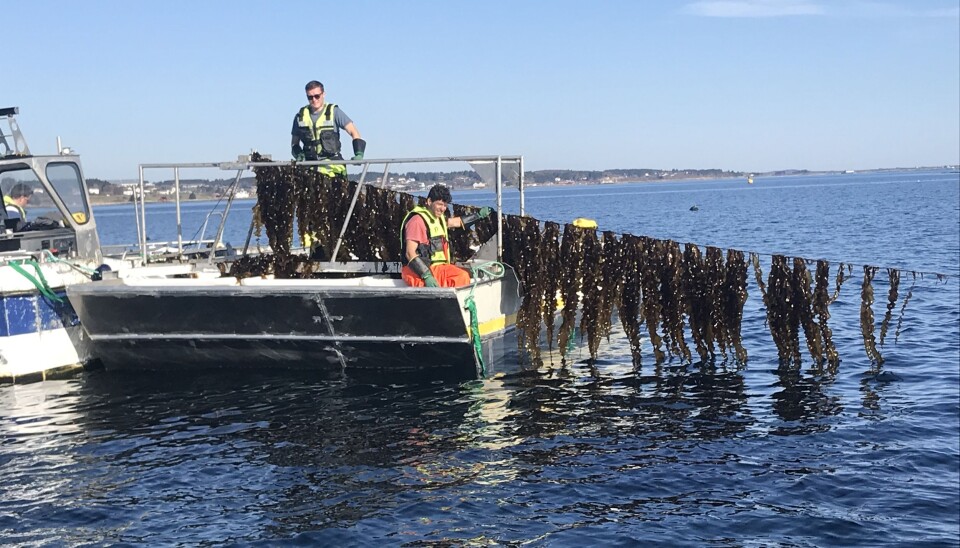Share your science:

Kelp products could surround us in the future - but how sustainable will the industry be?
OPINION: A large upscale of the kelp industry is probably around the corner in Norwegian coastal waters. In order to conduct kelp farming in an ecologically and economically sustainable way, it is crucial to understand how the ecosystems work.
The Norwegian coast is long, with cold nutrient-rich water. It is well suited for kelp cultivation. In 2018, kelp farming in Norway reported a harvest of 178 tonnes. Already in 2050, however, harvest has been projected to reach 20 million tonnes.
With a coastline at roughly 100 000 kilometres, it is safe to say that the potential for kelp cultivation in Norway is enormous.

Kelp as a food resource or chemical component
Seaweed and kelp will most likely be an important source of food and other resourceful products in the future, also in the Western world. We already see an industry that is being scaled up for human foods and production of animal and fish feed. Also, seaweeds have exciting potentials to provide raw material to replace plastic products for packaging and industry applications.
In the future, we envision that seaweed will be processed into a number of different raw materials, for example building blocks in the chemical industry. Bulk biomass can also be fermented into biogas in combination with carbon capture and storage technology (CCS).
Kelp should be farmed
In the Norwegian coastal waters, natural kelp forests cover an area corresponding to Norway's cultivated agricultural area. The kelp forests are vast and constitute important ecosystems. They form the food basis and provide shelter for a rich network of small animals and fish and ensure nursery grounds and growing areas for commercial fish species and shellfish.
Today, about 160,000 tonnes of kelp are harvested from these natural “blue” forests every year. This puts a strain on coastal ecosystems in the affected areas, and it often takes years to recover.
By farming kelp, however, it is possible to preserve the natural kelp forests and at the same time, increase the harvesting of kelp biomass for industrial purposes.

We use ropes to grow kelp
Kelp is fast-growing and is typically sown on ropes placed in the sea in autumn. Already in early summer, up to ten kilos of kelp per meter of rope can be harvested. During this short period, up to 200 tonnes of kelp can be produced per hectare every year. This rapid production of biomass takes place without the use of either fertilizers or pesticides.
All that is needed is natural nutrients, CO2 provided from the atmosphere and solar energy from sunlight.
When kelp grows, it absorbs CO2 and uses the carbon (C) in CO2 to build biomass. Thus, it can potentially contribute to reducing CO2 – up to 25 tonnes of CO2 per hectare. In this way, kelp cultivation can act as a measure against climate change and play an important role in the transition to a green future, both in Norway and internationally.
Sustainable production
With an upscale of the kelp farming industry just around the corner, it is important to prepare both ourselves and marine ecosystems for what awaits. The Norwegian Government's marine strategy from 2019 facilitates further growth in the seafood industry within a sustainable framework. In the NIVA-led KELPPRO project (2017-2020), funded by the Research Council of Norway, the project team has assessed both positive and negative environmental impacts of kelp cultivation.
The environmental footprint of the current volumes of kelp farming is small. In fact, kelp farming contributes to several positive ecosystem services. In addition to producing biomass and absorbing CO2 from the atmosphere, CO2 uptake also reduces the risk of ocean acidification. In addition, kelp cultivation absorbs nutrients from the water masses. This reduces negative consequences of eutrophication, meaning excess of nutrients from fertilization and industry, when this is a problem.
By understanding how coastal ecosystems work and with solid experience on natural kelp ecosystems through many years of research, a sustainable development of the kelp farming industry can be ensured.
Possible negative effects
Large-scale kelp farming may have negative impacts on the marine environment. Large amounts of kelp biomass that end up on the seabed, either by accident during farming or harvest, or by intentional disposal, can lead to a lack of oxygen, change in biodiversity and poor ecological conditions on the seabed. Furthermore, a large uptake of nutrients by cultivated kelp may outcompete natural seaweed/kelp and microalgae. As a result, this may affect the basis of the food chain, the fish, and ultimately us humans.
Whether kelp farms contribute to unwanted spread of species, genes and diseases in the sea or not, is largely unknown. However, recent results from the KELPPRO project indicate that alien species can utilize the kelp farms also outside the growing season.
Such studies are crucial to ensure a long-term, sustainable development of the industry, both ecologically and economically. Hopefully a research-based management can save the kelp farming industry from some of the challenges and expensive learnings that the fish farming industry has experienced.
Blue resource with green future
There are a lot of exciting opportunities in the emerging kelp farming industry. At the same time, it is important to keep in mind that the kelp farms’ environmental impact has been little studied. In order to expand the kelp farming industry in an ecologically and economically sustainable way, we strongly recommend ensuring an even better understanding of how the costal ecosystem works and how kelp farming interplays with it.
We envision, that with knowledge and care, kelp farming can be developed into a blue resource with a green future, both in Norway and elsewhere in the world.
———
This article was first published in Norweigan in the newspaper Aftenposten.
The Norwegian coast is long, with cold, nutrient-rich water that is well suited for kelp cultivation, such as here at Seaweed Solutions AS's facility at Frøya in Trøndelag. (Film: Kasper Hancke / NIVA)
Share your science or have an opinion in the Researchers' zone
The ScienceNorway Researchers' zone consists of opinions, blogs and popular science pieces written by researchers and scientists from or based in Norway.
Want to contribute? Send us an email!






























